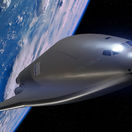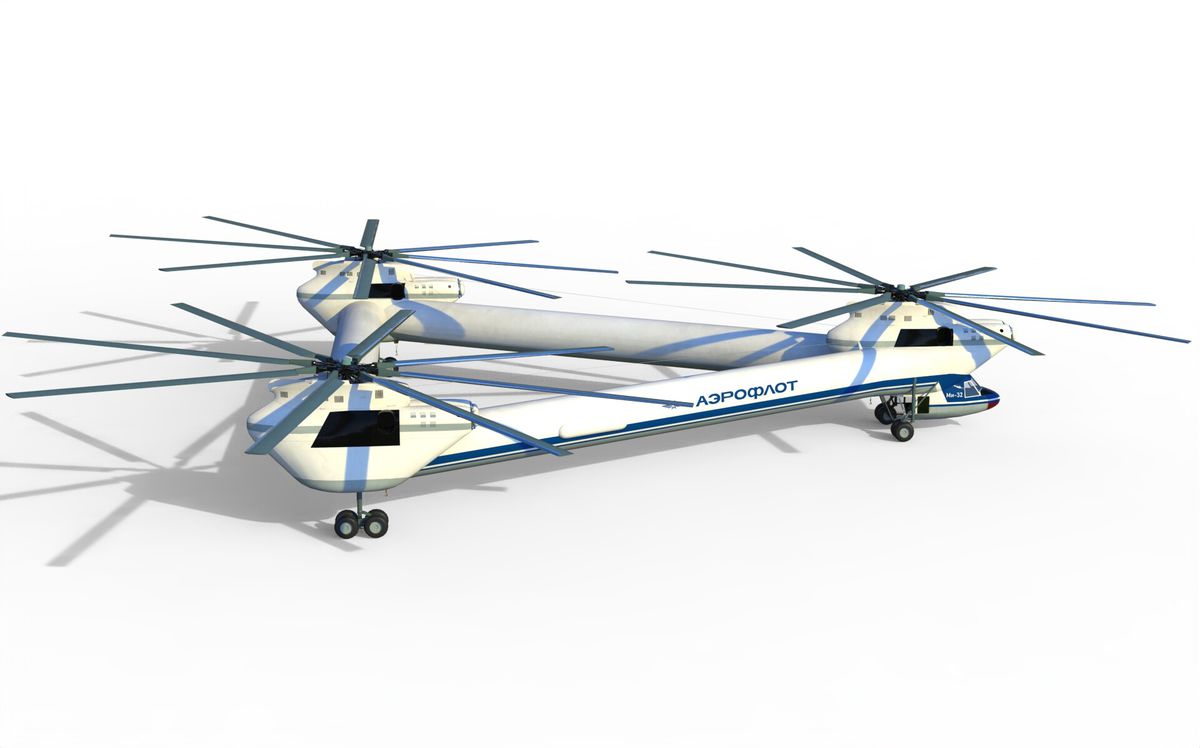The super-heavy helicopter was supposed to have a maximum take-off weight of 136 to 146 tons – depending on how it is used.
The huge fuselage of the Mi-32 helicopter had dimensions of 40.5 x 36 x 4.3 meters.
In the 1970s, the fuel-energy and raw material base of the Soviet Union began to move from the European part to the regions of Siberia, the Far North and the Far East. These regions were characterized by vast distances, difficult terrain, harsh climatic conditions and an almost complete absence of roads and other transport infrastructure.
Transportation of heavy loads
As a result, helicopters played an increasingly important role in the national economy, as they enabled the reliable supply of industrial equipment and materials to these areas regardless of the season. However, practical experience showed that the carrying capacity of the helicopters of the time, such as Mi-6 and Mi-10K, was often insufficient for the needs of transporting heavy and bulky cargo, the weight of which sometimes reached tens of tons. This led to the necessity of either dividing these costs into smaller parts or using traditional means of transport.
The armed forces of the Soviet Union also needed helicopters with a high carrying capacity to transport heavy combat equipment such as tanks, missile systems or engineering equipment and to quickly evacuate damaged combat vehicles. In the mid-1970s, the Moscow ML Mila (Mil) Helicopter Plant received a government mandate to develop a super-heavy helicopter capable of transporting such cargo.
In 1976, the plant, in cooperation with the Central Aerohydrodynamic Institute of NE Žukovský (CAGI), began to analyze the possibilities of transporting heavy loads using two or three helicopters connected by a fixed structure. However, this method required special crew training and solving many technical problems. In December 1976, the State Committee for Science and Technology (GKNT) of the USSR therefore issued a decision instructing the ML Mila plant to prepare a proposal for the creation of a helicopter with a higher payload.
The new super heavy helicopter project was designated Mi-32. Preliminary analyzes showed that the implementation of the traditional single-propeller concept would be complicated due to problems with the design of the main reducer and the support system, which would increase the time and increase the cost of developing and manufacturing the machine. However, the plant had unique experience in quickly creating helicopters with higher payloads by duplicating proven monopropel helicopter support systems, as was the case with the V-12.

This approach led the chief designer MN Tishchenko to the decision to develop the Mi-32 using the support systems and power units from the Mi-26 model. The analysis of the use of heavy helicopters showed that most large loads are transported on an external suspension device due to the complexity of loading, which makes it possible to do without a landing area and carry out assembly work without a previous landing. The result was the decision to adopt the concept of a crane helicopter with a small fuselage for the Mi-32.
Revolutionary construction
Two nacelle connection schemes were explored: “star”, where the girders from each nacelle converge at one point in the center of the triangle, and “triangle”, where the girders form the sides of an equilateral triangle. Despite the greater losses due to air circulation, the “triangle” scheme was preferred because it ensured a natural alignment of the structure’s vibrations, eliminating the need for a synchronizing reducer. In order to reduce the losses caused by the mutual influence of the rotors, one nacelle was placed in the front and two in the rear.

Mil Mi-32 super heavy helicopter Mil Mi-32 super heavy helicopter
The front nacelle was to accommodate the helicopter crew: two pilots, an on-board technician and an operator. The operator’s cabin was designed similar to the hanging cabin on the Mi-10K model, which allowed for direct visual monitoring of the load on the external hanging device and the installation site when performing crane and assembly work. Behind the pilot’s cabin, similar to the Mi-26 model, there was a compartment for accompanying personnel. The huge fuselage of the Mi-32 helicopter had dimensions of 40.5 × 36 × 4.3 meters.
Each of the rotors was to be powered by a pair of Lotarev D-136 engines, known from the Mi-26 model. The cabin for the two-man crew was designed under the hull, which allowed maximum use of space for cargo transportation. The project envisaged a maximum take-off weight of 136,000 to 146,000 kg, a height reach of up to 4,000 meters, a maximum speed of 200 to 230 km/h and a range of up to 1,200 km. The project took its final shape in 1982.
However, despite its innovative design and potential, the Mi-32 helicopter never saw fruition. If built, it would become the largest in the world. The reasons for stopping the project have not been officially disclosed, but it is believed that technical difficulties and economic factors influenced the decision.
Source: vat.pravda.sk


